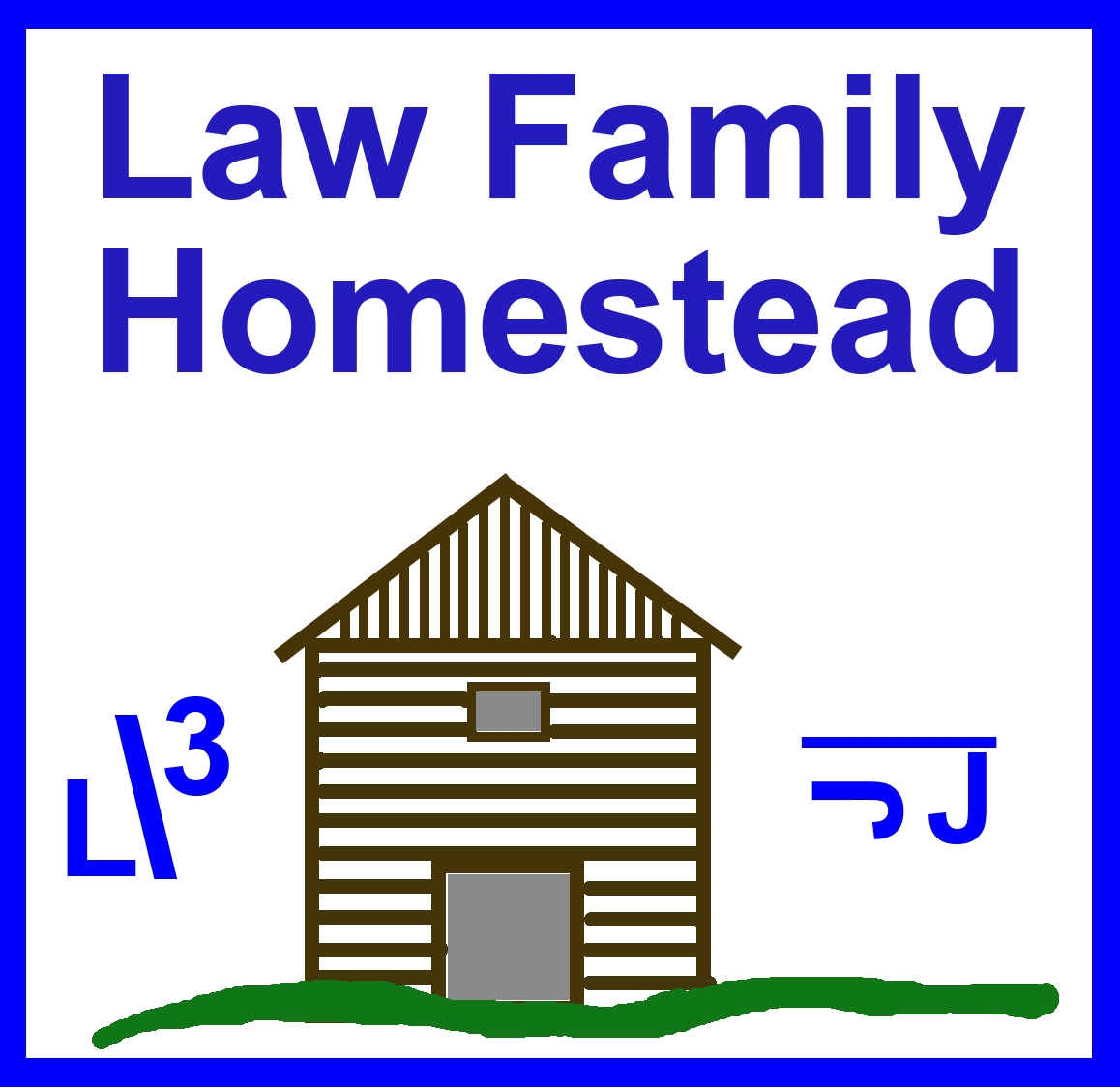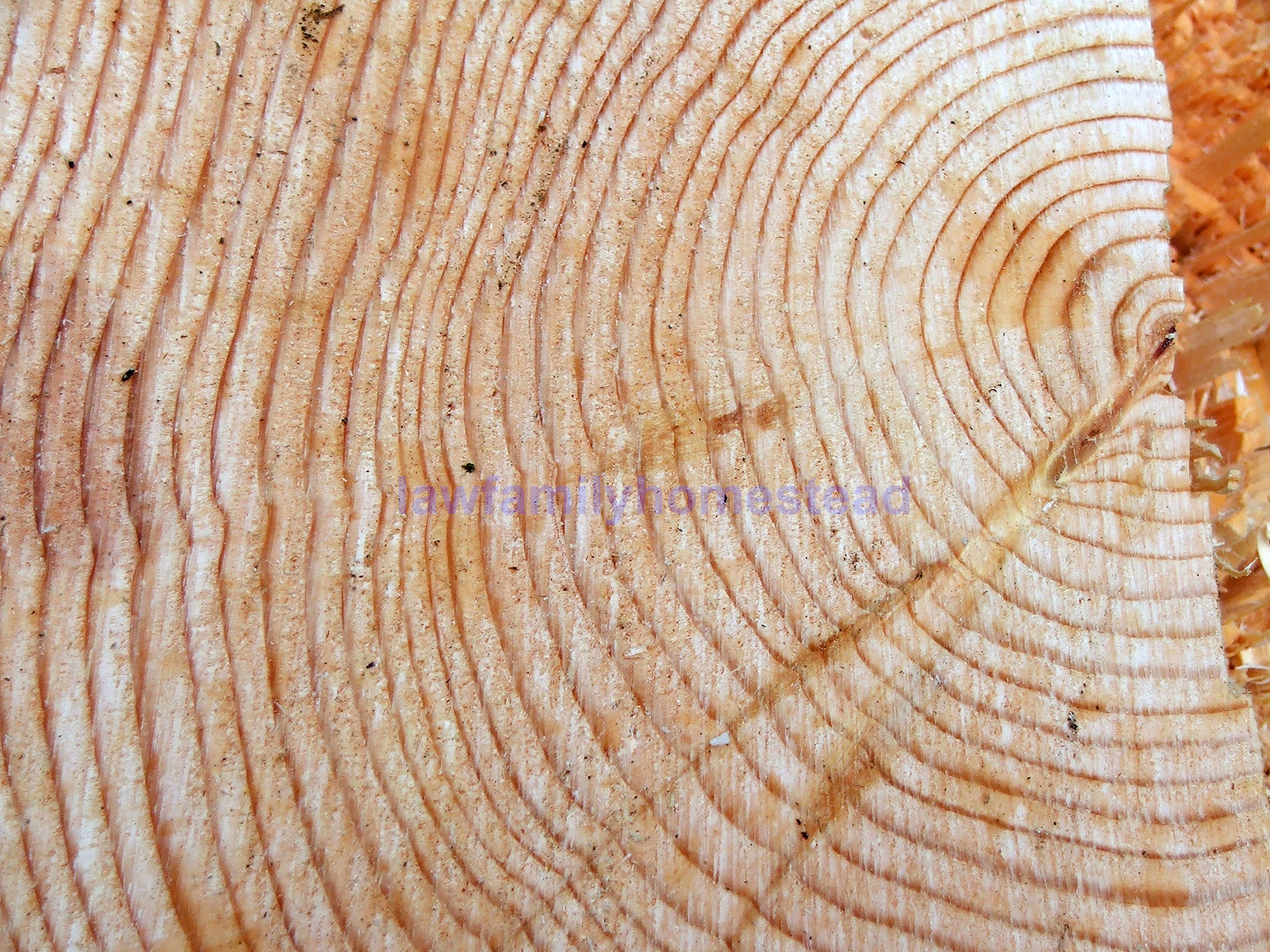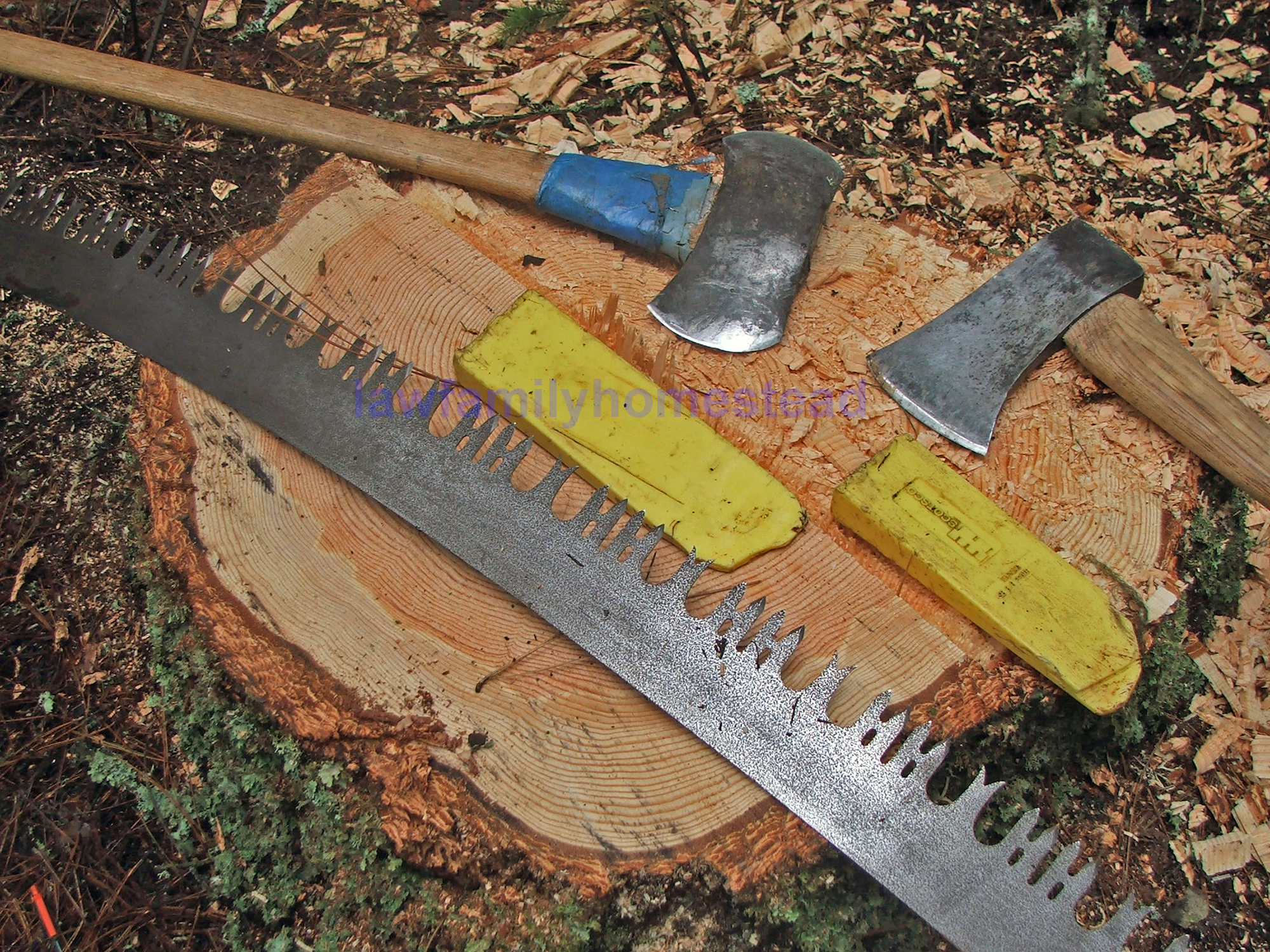My sons were watching intently from the opposite hillside as dad and I stopped cutting midway through the tree, leaving a strip of uncut wood called a "hinge" to help limit the direction the tree would fall. Before we could drive our wedges deeper into our back cut, the top slowly began to move, and the tree started to fall toward the gap between the larger timber in front of us. Up to this point, cutting through the Douglas fir with our crosscut saw had been a very quiet operation. CW was standing nearby with his mother, off to one side, and uphill from the falling tree. Our other sons were standing still further away on the hillside but were amply rewarded with a resounding crash as the 100-foot fir managed to take out two smaller 50-foot fir trees with it as it fell.
CW and I carefully counted the growth rings on the tree stump to determine the tree's age.
We found it was 80 years old.
CW took his axe and started limbing the branches from the felled tree, while my wife searched for the last 5-foot section of top to determine the accuracy of our earlier measurements.
So, just how accurate is the timber cruiser's tree height data which he gathers day by day as he moves through the forest? By starting our measurement from the bottom of the uphill side of the Douglas fir stump height of .6 feet added to the length of the fallen tree, including the reattached top, we measured a total tree height of 100.2 feet. This was less than half an inch difference from the 100.65 feet measurement I got with the relascope.
And again, measuring from the bottom of the uphill side of the Douglas fir stump, up the felled tree 26.7 feet, the diameter of the tree was 20.1 inches. This was an eighth of an inch difference in tree diameter from the relascope measurement of the tree's taper height.
The relascope's accuracy is quite reliable for tree or taper height measurement. However, it does not have the necessary accuracy to definitively identify borderline trees which are measured and defected within a variable radius plot, to be examined, known as "in" trees. This speaks volumes about the nature of the data demanded from the cruiser as he verifies borderline trees in the plot to close to call "in" or "out" by the prism operated relascope. A more precise measurement is taken by checking the limiting distance with a logger's tape measure. Sometimes the limiting distance falls so close that a cruiser spits from the mark on his tape measure, plumbing straight down towards plot center, to make the final determination of an "in" or "out" tree on the plot.
As an added challenge, there are usually obstacles in his path as he pushes through clumps of alders and scrambles up a 60 percent slope trying to weave his measuring tape through tree branches and brush in a straight line toward the flags marking the location of the plot center marker. He hopes that the bent horseshoe nail on the end of his tape measure was pressed firmly enough into the tree bark to stay put so he doesn't have to maneuver his way back over this path again . . . but not so firmly that the end of the tape measure breaks off when he tugs on it from the plot center to retract his tape. He hurries on through the brush over fallen trees, parting dense thickets of regenerative growth on steep mountain slopes, racing the setting sun as he searches for the next plot center on his GPS before darkness in the forest sets in. Dusk renders the relascope useless unless paired with a flashlight, a trick my teacher, Steve, taught us as he worked to squeeze every bit of light out of a day, before hiking back to camp in the dark.
However, on this fine day with the sun shining on the snow, my father, my family, and I had enjoyed these moments together. We knew that we had found the right tree for our future barn's sill plate. The memories that are made with our family, are truly the most valuable pieces of our lives. Multi-generational interaction is an important component in the creation of strong families and communities. A great generation should be recognized and judged not by the expansive empire which they conquer and build, but by their ability to produce a future generation with the capability to replicate their ancestors' roles by domestically converting the produce of the land, and the manufacturing of its raw materials, (within the bounds of sustainable stewardship practices), to fulfill their basic needs.
Our tree represented an 80-year unit of time which has been called a saeculum, or the duration of a human lifespan, influencing a total of four generations. I had certainly experienced the input of the previous three generations in my life, beginning first with my parents' sincere Christian example in my upbringing. The influence of our earlier pioneer generations through personal interaction as well as the written word in historical literature has given my wife and I a firm foundation, based on principle, to build our family's lives upon. A properly and smoothly functioning traditional family is the sill plate in the structure of a representative government. The survival of a free society rests upon the preservation of this structure, our American heritage.
During this period of growth for me, as these particular self-evident truths were solidifying in my mind, Steve and his wife loaned us a book entitled: "America" by Eric Sloan. Sitting by a warm fire on winter evenings and reading our favorite books after our sons are in bed is a memory-building activity my wife and I enjoy together. As we read the last three paragraphs from Sloan's book (included below) we honestly felt they reflected our feelings as our lives and perspectives have been shaped through our years of marriage together, living upon the land, accessing its resources, and working with our hands at our trade, while creating a new generation. Our hope is that we will positively impact our six young sons and their future families in preserving their heritage of freedom, so that "the ingredients of freedom" will be known to the American generation of tomorrow.
Quote: "With all the vanished occupations, a good deal of American tradition was shelved, for a man's work is reflected in his thinking as much as his thinking is reflected in his work. Great-grandfather not only built a business for his sons, but enjoyed evolving a philosophy to go with it and bestowed that upon his offspring as well. The inheritance of a principle, however, is like the inheritance of money: it needs constant and wise application lest it become lost.
"Occupations are born quickly today and often die without achieving stature and character. It is then that a worker comes to resemble a discarded machine with nothing in the nature of business to leave his children except money. The American heritage too frequently consists of nothing else.
"His individuality, his church, his home, his town, and his occupation were the things great-grandfather most enjoyed bestowing. These things, he knew, were the ingredients of freedom. But freedom, while a heritage, must be re-won for each generation. These things were known to the American of yesterday."







